- BANNER ROLL
- An 18th century corruption, now obsolete, of the equally obsolete term bannerole
(see bannerole).
Please note, it is suggested by one source that this term could also apply to a roll or scroll
depicting banners.
- BANNER TOP
- See finial (also supplementary note)
Please note that the Editors consider this term to be both contradictory and confusing, and suggest therefore, considerable caution before use.
- BANNERET
- 1) A term sometimes used to describe a miniature banner; this is often (but
by no means invariably) straight-sided and triangular ended or swallow-tailed, is designed to be displayed
vertically and usually shows emblems of either national and local significance (see
also bannerette,
emblem, general, table flag and
triangular ended).
- 2) A medieval term, now obsolete, for a knight entitled to lead men into
battle – a knight banneret – whose armigerous lance pennon was square-ended, or for the group of knights so lead –
a banneretus (see also
armigerous,
banderium,
lance pennon 1)
and pennoncier).
![[banneret]](../images/v/vx-hr-vi_cd.gif)
![[banneret]](../images/v/vxt-d1088.gif)
Table Flag/Banneret of Čađavica, Croatia;
Lance Pennon of Sir Robert Knolles. Knight Banneret c1360, England
- BANNERETTE (or BANERETTE)
- 1) A small ceremonial banner decorating a set of bagpipes, a drum or a trumpet
– a drum banner, pipe banner or a trumpet banner or tabard (see also
war banner).
- 2) See banner 3.
![[bannerette]](../images/v/vx-gb^de7grpb.gif)
7th Duke of Edinburgh’s Own Gurkha Rifles, UK
- BANNERETUS
- A medieval term, now obsolete, for a banneret (see
banneret 2)).
- BANNERHAUPT
- The German term for a bannerhead – see bannerhead.
- BANNERHEAD
- The term – and a direct translation of the German "Bannerhaupt" –
sometimes used in German language vexillology – to describe the plain area of field that may appear
at the head of a hanging flag or a banner and almost invariably bearing a civic or regional coat of
arms (see also
banner 2),
hanging flag and
hoisted flag).
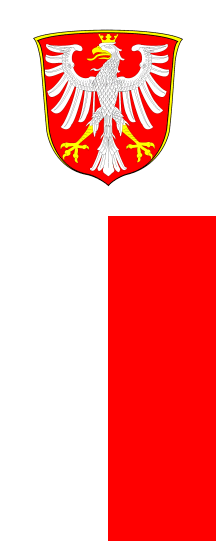
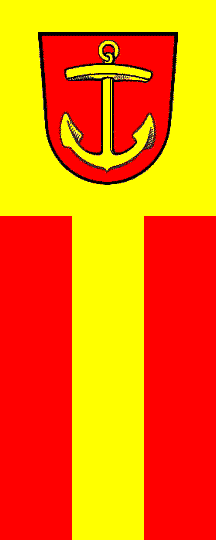
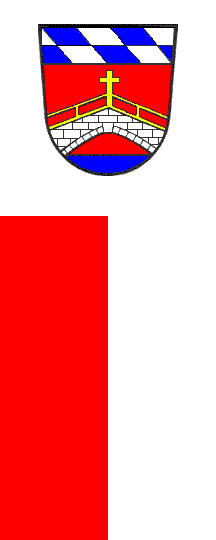
Hanging Flag of Frankfurt am Main, Germany;
Banner of Ludwigshafen, Germany;
Hanging Flag of Fürstenfeldbruck, Germany
- BANNERMAN
- 1) In largely Scottish usage a term, now obsolete, for one who bears a standard.
- 2) An originally 17th century term, now obsolete, for a Chinese soldier
belonging to one of the eight “banners” (or divisions) of the Manchu army
(see also banner 7)).
- BANNEROLE (or BANNEROL)
- The term, now obsolete, for a small flag (usually three feet – 91 cm – square) that displayed a
single quartering from a deceased person’s coat of arms for use at that person’s
funeral – a banner roll (see also achievement of arms 2),
badge banner,
banner of arms,
canton 3),
coat of arms,
great banner,
grumphion and
quartering).
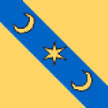
Bannerole (or single quartering) from the Arms of the 4th Duke of Buccleuch d1687
Please note – not be confused with banderole (see
banderole).
- BAR
- 1) The heraldic term for a straight, wavy (or otherwise decorated –
for example a bar embattled as illustrated below) horizontal stripe that is rarely borne singly,
and which in strict heraldic practice should occupy about one-fifth the width
of a shield, a banner of arms or any quartering thereof – but see note b)
below and compare with fess (also
barrulet, barry,
filet and
quartering 1)).
2) In vexillology see stripe(s).
3) In UK military usage and in some others, the metal clasp which is added to a medal ribbon to indicate a second award of that same medal, or the battle, campaign or reason for its award.
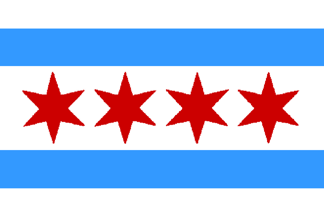
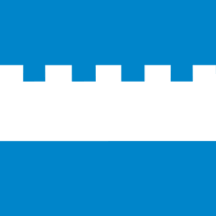
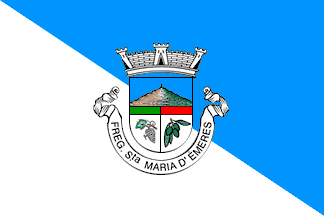
Flag of Chicago, US;
Flag of Frogn, Norway;
Flag of Santa Maria de Emeres, Portugal
Notes
a) In vexillology a fess and a bar are regarded as almost synonymous.
b) With regard to 1), in strict heraldic usage there is a size difference between
a bar and a fess (as listed herein), and that a fess should be confined to the centreline of the field
whereas a bar or bars need not.
- BAR CROSS
- An accurate but seldom used translation (Balken meaning a "balk", "bar" or "beam" of
wood) of the German term Balkenkreuz.
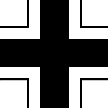
- BAR SINISTER
- This term, supposedly indicating illegitimacy, is a nineteenth century invention – for the
correct heraldic phrase see baton sinister.
- BARBED
- 1) The heraldic term used when describing the leaves that appear behind the petals of a rose –
but see leaved, seeded and its
following note (also
garnished)
2) A heraldic term
also used to describe the metal point of an arrow
or of a spear, particularly when these are of a different tincture – but see
shafted (also hafted,
hilted,
rogacina and
tincture).
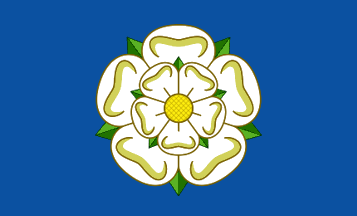
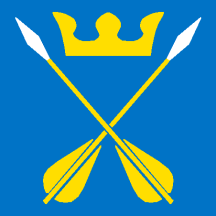
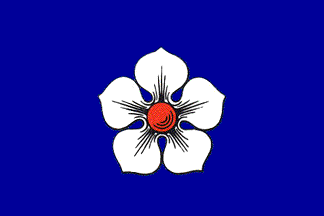
Flag of Yorkshire, UK;
Flag of Dalecarlia, Sweden;
Flag of Haguenau, France
Please note that this term is sometimes (and incorrectly) also applied to the thorns found on the
stem of a rose.
- BARGE FLAG
- 1) In UK usage, one of a number of varying flags (usually a banner of arms)
which are flown from the ceremonial barges of London’s livery companies (see
also banner of arms)
2) See
boat flag 3) and the note
below.
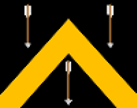
Barge Flag/Banner of Arms of The Worshipful Company of Fletchers, London UK
Please note that in British RN and some other usage, the small boat carrying a vessel’s
commander, or a flag officer, is called the captain’s, commodore’s or admiral’s "barge",
but that any rank flag or ensign flown from it is invariably called a "boat flag", as referenced
above.
- BARGEMAN’S ASSOCIATION DISPLAY MAST
- See sailor's mast.
- BAROQUE CARTOUCHE
- See cartouche.
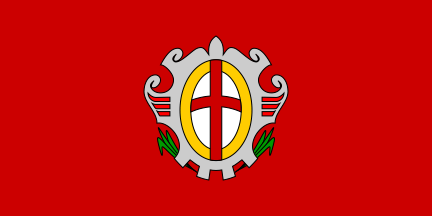
pn-lb.gif)
Flag and Arms of Labin, Croatia
- BAROQUE SHIELD (or BAROQUE ORNAMENTED SHIELD/FRAME)
- The terms sometimes used to describe an elaborately designed shield of the post-medieval
type – a baroque ornamented shield/frame – but see renaissance shield
(also shield).
.gif)
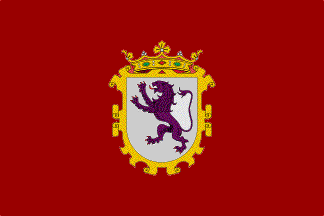
.gif)
Arms of Kemmern, Germany (Wikimedia);
Flag of León, Spain;
Arms of Kraftisried, Germany (Wikimedia)
Please note that several of the terms describing a specific type of shield are still in the process of
standardization, and that no consistent approach has thus far been identified.
- BARRULET (BARRELET, BARRULY or BARRULLY)
- Alternative heraldic terms for a narrow horizontal stripe that is rarely borne singly, which is often
to be seen as a barrulet wavy and which in strict heraldic practice should occupy one-quarter the
width of a bar or about one-twentieth the width of a shield, a banner of arms or any quartering
thereof – a barrelet, barrully or bracelet (see also
bar,
barry, filet and
wavy).
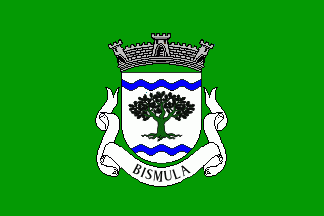
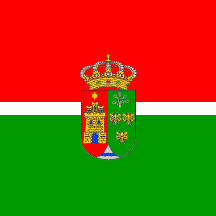
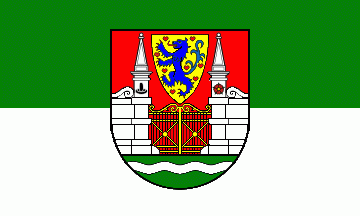
Flag of Bismula, Portugal;
Flag of Terradillos de Sedano, Spain;
Flag of Winsen upon Aller, Germany
- BARRULET (BARRELET, BARRULY or BRACELET) WAVY
- In heraldry see barrulet.
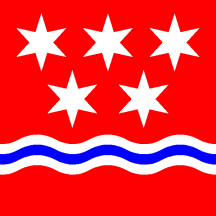
Flag of Rheinwald, Switzerland
- BARRY
- The heraldic term for the division of a shield, a banner of arms or any quartering
thereof, into four or more usually (but not invariably) equal horizontal stripes in
alternating tinctures – but see "barry wavy" (below) and
multi-stripe
(also banner of arms, bar,
barrulet,
bar, quartering 1) and
tincture).
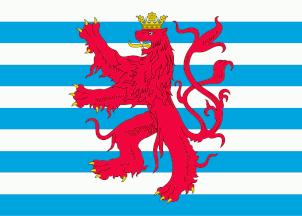
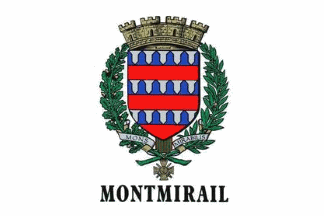
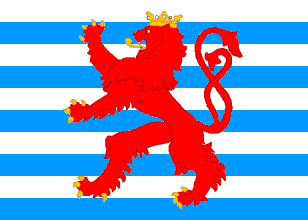
Civil Ensign of Luxembourg Type A;
Flag of Montmirail, France;
Civil Ensign of Luxembourg Type B
- BARRY WAVY
- The heraldic term used to describe a series of wavy stripes, often (but not
invariably) in azure and argent to represent running water – but see
"barry" (above) and wavy.
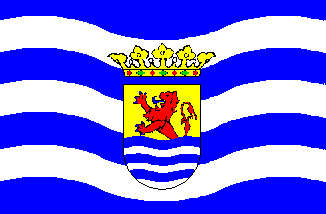
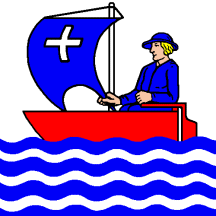
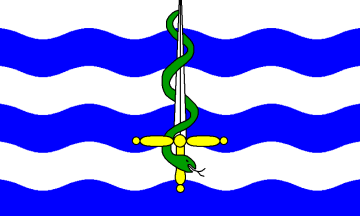
Flag of Zeeland, The Netherlands;
Flag of Unterägeri, Switzerland;
Flag of St Paul’s Bay, Malta
Introduction |
Table of Contents |
Index of Terms | Previous Page |
Next Page
![[banneret]](../images/v/vx-hr-vi_cd.gif)
![[banneret]](../images/v/vxt-d1088.gif)












pn-lb.gif)
.gif)

.gif)











![[bannerette]](../images/v/vx-gb^de7grpb.gif)
